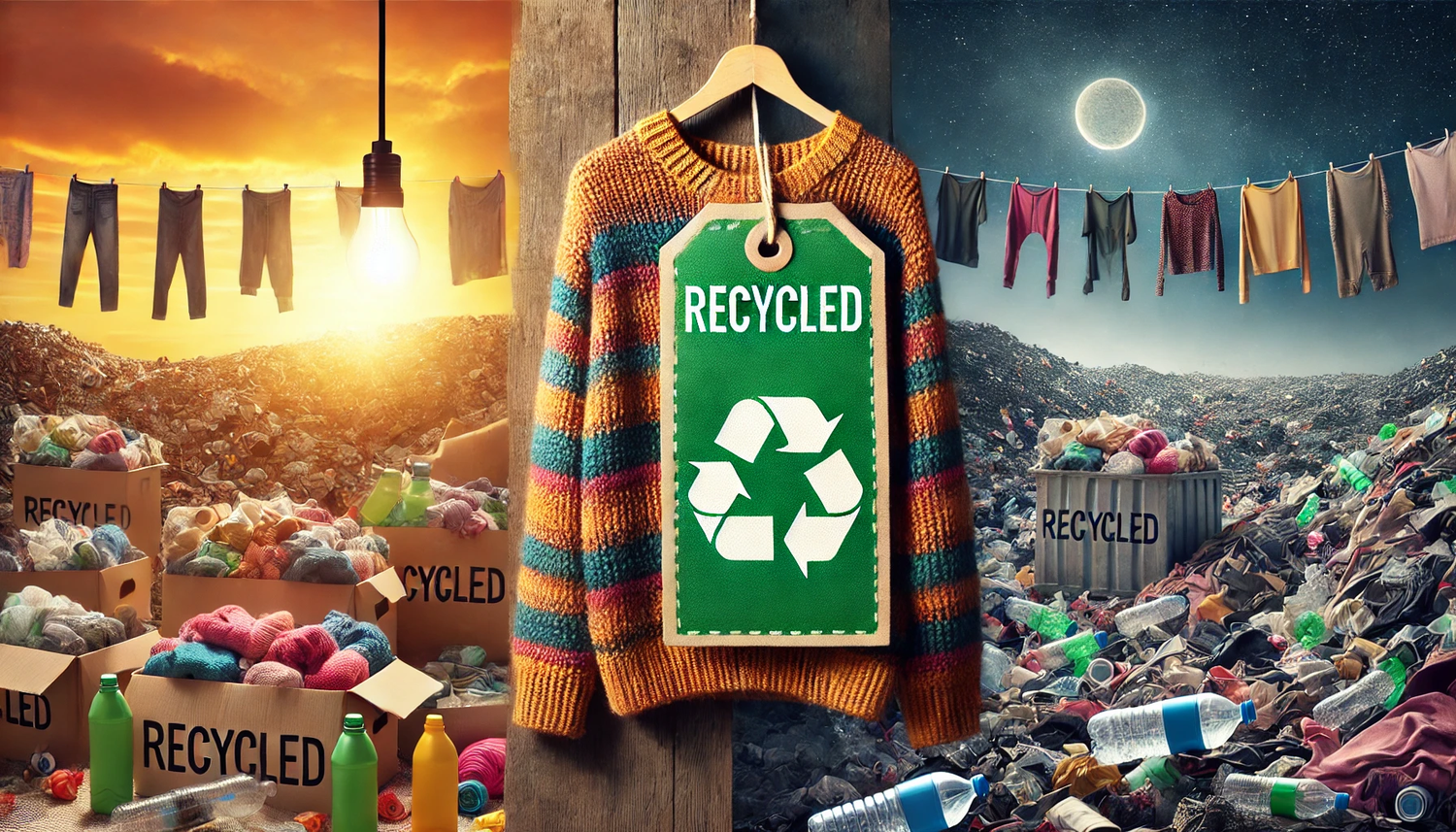“Will recycled plastic really save fashion?”
That’s the question we see everywhere right now — on clothing labels, in store windows, and all over sponsored posts on social media. Recycled polyester — made from used plastic bottles — has become a symbol of a fashion industry trying to look greener. But is it truly a sustainable shift, or just another marketing tool?
At Singulaar, we believe in looking deeper. Because while textile innovation is a key piece of the sustainability puzzle, it should never be used as an excuse to maintain a broken system of overproduction.
How does recycled polyester work?
Recycled polyester (rPET) is made by collecting used plastic bottles, cleaning them, melting them down, and spinning them into fibers that can be woven into fabric. This process reduces reliance on virgin fossil fuels, uses less energy, and gives a second life to existing plastic waste.
On paper, it sounds promising. Producing one kilogram of recycled polyester emits on average 45–55% less CO₂ than virgin polyester. And for a fashion industry responsible for nearly 10% of global greenhouse gas emissions, every improvement matters.
But beware of greenwashing
The main issue is lack of transparency. Many brands flaunt the word “recycled” without disclosing the actual percentage of recycled content in their products. In some cases, it’s as little as 5–10%.
Even more concerning, most rPET comes from plastic bottles that can no longer be recycled again once turned into textiles. This is what we call downcycling — the plastic is reused once, but it’s permanently removed from the recycling loop.
Recycling ≠ Circular Economy (yet)
What’s still missing is a true circular system. Very few garments are recycled back into new garments. Most textiles are made from blended materials, dyed, or treated with chemicals, which makes them nearly impossible to recycle.
The result? Even with recycled polyester, fast fashion continues to overproduce at scale. The label “recycled” becomes a convenient way to distract from the unchanged, wasteful business model behind it.
What we do differently at Singulaar
At Singulaar, we don’t use the word “sustainable” lightly. Our sneakers are designed to be long-lasting, repairable, and traceable — built for real, conscious use.
Our approach to recycling is honest and intentional:
• We only use recycled materials when they are genuinely more sustainable, such as certified textiles or foams made from industrial scraps.
• We prioritize short supply chains and full transparency on materials and production.
• And above all, we design to reduce overconsumption — with timeless, versatile products, made in small batches and only when needed.
Because the most sustainable product is the one you don’t need to replace.
What’s the takeaway?
Recycled textiles are a promising innovation — but they’re not a magic solution. As long as the fashion industry uses them to justify endless production, their impact will be limited, or worse, misleading.
Real change begins with our choices: the brands we support, how we consume, and the systems we help shape — systems that go beyond throwaway culture.
What do you think about recycled textiles? Can they be trusted, or should we be more skeptical? Join the conversation in the comments or on Instagram.




Leave a comment
All comments are moderated before being published.
This site is protected by hCaptcha and the hCaptcha Privacy Policy and Terms of Service apply.